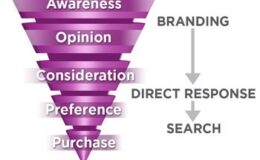Denver, Colorado – Just when you think you know something about search engine optimization, consumers change their search patterns. More and more, people are using search terms of 3 words or more, known as “long tail” keywords, to find what they’re searching for more quickly. It is estimated that 70% of all internet searches now involve long tail keywords. That presents search engine optimizers with both the challenge of adapting to a changing market and the opportunity to reach new customers by specifically targeting long tail keywords.
READY – Targeting long tail keywords offers several advantages: For one, they bring you more highly qualified visitors. Targeting the long tail “golf clubs for women” will bring you a higher percentage of women’s golf clubs buyers than just the “head term,” “golf clubs.” For another, there is less competition for long tail keywords. You can usually gain a higher Search Engine Page Ranking with a long-tail keyword than you can with only a low head-term. And if your head term ranking slips, diversifying your search terms by targeting long tail forms will help you move back up.
AIM – To target long tail keywords effectively, use Google Analytics to identify the terms that bring the most visitors to your site. Then you’ll want to search for long tail variation of those terms. Search for terms that that narrow and refine your head term. When you find a likely long tail terms, include it in your URL page and page title, among your H1 tags and throughout the content of your site. Then close your long tail visitors by providing additional content tailored to the long tail visitor’s interests such as pictures, videos or special promotions.
FIRE – To measure the effectiveness of your long tail target strategy, you’ll want to establish a base line by measuring the long tail traffic you have now. That will allow you to measure monthly increases. You can analyze how useful a term is by looking at the traffic it drives. You can track which terms bring the most revenue and evaluate the success of your long tail targeted content by measuring bounce rate, time on page, social reach and inbound links. Once you have identified successful terms, look for variations that appeal to the same market. Then keep watch for visitors who get to your site through other search terms and target those terms, too!
If you would like more information on how keywords will improve your search engine rankings, and more importantly, deliver better qualified customers, please contact us today. We provide a keyword analysis report that will sure to increase sales.







